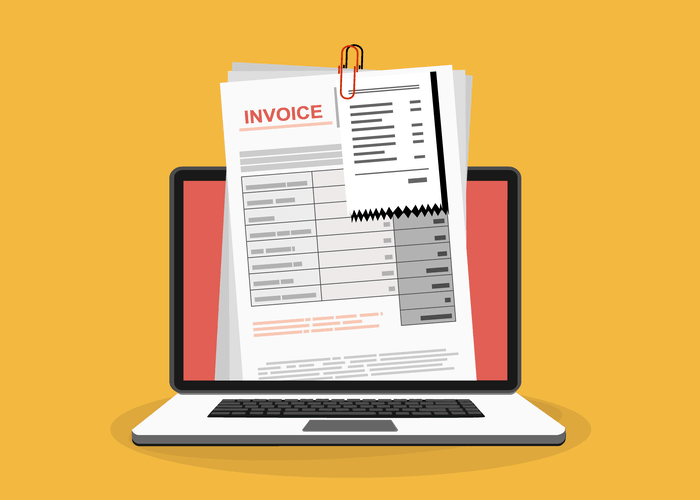
The business needs to identify the reasons for the discrepancy and reconcile the differences. This is done to confirm every item is accounted for and the ending balances match. Businesses maintain a cash book to record both bank transactions as well as cash transactions. The cash column in the cash book shows the available cash while the bank column shows the cash at the bank.

A bank reconciliation statement is a document that compares the cash balance on a company’s balance sheet to the corresponding amount on its bank statement. Reconciling the two which of the following is not a step in preparing a bank reconciliation? accounts helps identify whether accounting changes are needed. Bank reconciliations are completed at regular intervals to ensure that the company’s cash records are correct.
Step one: Comparing your statements
Thus, such debits made by the bank directly from your bank account lead to a difference between the balance as per cash book and the balance as per the passbook. However, there may be a situation where the bank credits your business account only when the cheques are actually realised. Now, such a figure is shown as a credit balance in your cash book. However, in the bank statement, such a balance is showcased as a debit balance and is known as the debit balance as per the passbook. The above case presents preparing a bank reconciliation statement starting with positive bank balances.
- You receive a bank statement, typically at the end of each month, from the bank.
- On the bank side of the reconciliation, you do not need to do anything else except contact the bank if you notice any bank errors.
- These are differences that will appear in the bank statement after some time, most probably in the next bank statement.
- Add any transit deposits accounted in ledgers that might not appear in the bank statement.
- Typically, the difference between the cash book and passbook balance arises due to the items that appear only in the passbook.
As mentioned above, deposits in transit are cheques that the bank has not cleared yet. While outstanding checks refer to checks that have been paid by the company but not presented by its suppliers. Therefore, the company must adjust these differences on the bank reconciliation statement. You must post the journal entries of all the adjustments made to the balance as per the cash book. Reconciling bank statements with cash book balances helps you, as a business, to know the underlying causes that lead to such differences. Debit memos reflect deductions for such items as service charges, NSF checks, safe-deposit box rent, and notes paid by the bank for the depositor.
More Resources on Small Business Accounting
To prepare a bank reconciliation, it is important that both the bank book and the bank statement of the business are available. Therefore, once the business gets the bank statement and identifies these differences, these are recorded in the bank book of the business. Unrecorded differences, as the names suggests, are differences that are not recorded. These are differences that are recorded in the bank statement of a business but not in the bank book of the business. The differences are classified in one of these two categories based on which document, the bank book or the bank statement has the difference and the differences must be adjusted against. The business has to identify any differences between the balances in these two documents and reconcile them in order to ensure proper control over it bank balances.
Similarly, if customer payment checks on the balance sheet do not match bank records, a cross-check is necessary. To keep a record of business transactions, a Bank Reconciliation Statement (BRS) comes into play. Bank Reconciliation Statement is a statement which records differences between the bank statement and general ledger. The amount specified in the bank statement issued by the bank and the amount recorded in the organization’s accounting book maintained by Chartered Accountant might differ. A BRS checks entries on a monthly basis to avoid any future discrepancy. A BRS means matching records for a cash account entries corresponding to the bank statement.
How can HighRadius Help You with Bank Reconciliation?
If there are any differences between the two, the company, through bank reconciliation, can identify those differences. Then, according to the type of difference, the company can adjust it in its bank book or make it a part of its bank reconciliation statement. Companies perform bank reconciliation at regular intervals, usually at the end of each month.
- There are no unrecorded Receipts (Cr.) but if they did exist, they would be debited to the bank book.
- While outstanding checks refer to checks that have been paid by the company but not presented by its suppliers.
- The bank book of the business is an internally prepared document and is prepared by the management of the business, or specifically the accounting department.
- If you use the accrual system of accounting, you might “debit” your cash account when you finish a project and the client says “the cheque is going in the mail today, I promise!
- Similarly, the timing differences need to be adjusted against the bank statement balance.
- Regardless of how you do it, reconciling your bank account can be a priceless tool in your personal finance arsenal.
- As with deposits, take time to compare your personal records to the bank statement to ensure that every withdrawal, big or small, is accounted for on both records.